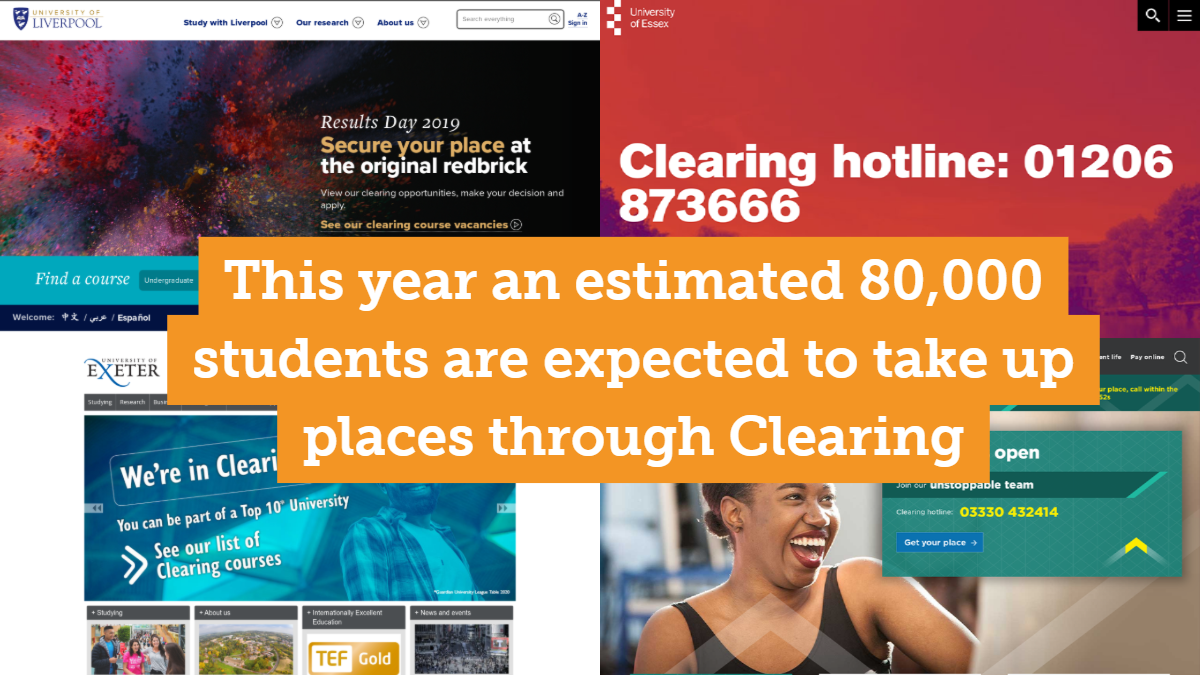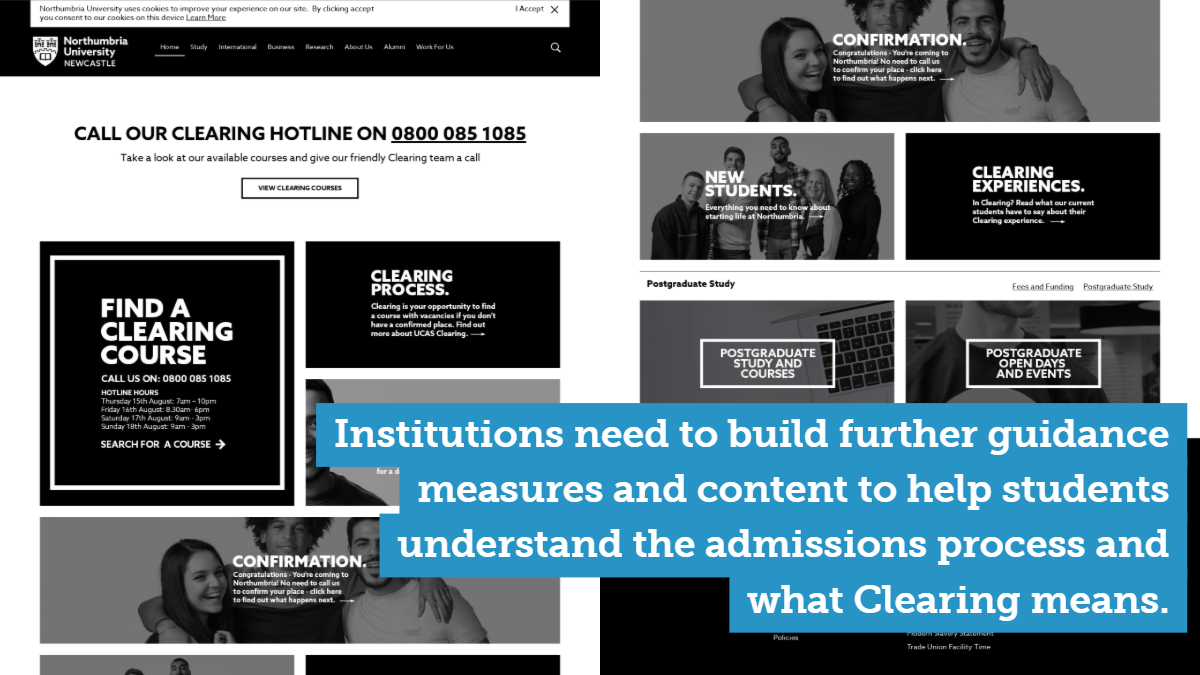We know the higher education sector has never been more competitive than now.
The marketplace is dynamic and fast-paced and institutions are working hard to ensure underlying systems and information are well developed for prospective students.
In the UK institutions have experienced the latest recruitment frenzy known as A-Level results day. If you missed our last post on Clearing, we talked about how universities were preparing for it and the tactics being deployed to take maximum advantage of this crucial period in the recruitment calendar.
Now the dust is settling we're taking the opportunity to look back at the trends that set this year's Clearing period apart, identifying how universities can respond and reviewing how the admissions process itself might change in the future.

Students 'buying behavior' is changing
While Clearing was once a second chance for students who had missed their grades, many now use it to apply for the first time or because they've changed their mind, or they want to try their luck at a more prestigious university.
In response to this changing behavior, UCAS (The UK Universities and Colleges Admissions Service) has allowed students, for the first time this year, to release themselves from their first-choice university, which allows them to shop around for a new institution.
This may be a game-changer as prospective students who are still making up their minds about the institution or courses they want to take no longer have to wait to be released. In a recent Student Room Survey conducted prior to results day, almost half of the students were planning (10%) or considering (39%) using this new service.

Meanwhile, Clearing is undoubtedly becoming the preferred route for university applications, with growing numbers of school-leavers having the confidence to wait until they have their grades before applying to university at the last minute through Clearing.
Last year, 66,770 people found places at UK universities using the Clearing process, and this year an estimated 80,000 students are expected to take up places through the system, according to UCAS.
But beneath the surface of these trends, the way students go about selecting a university is also changing.
Students seem to be better informed and savvier. Their research and evaluation of universities also seems to be carried out over a longer period. And many are also shopping around and 'trading up' on receipt of their grades as we mention above.

Universities respond with new tactics, fresh marketing, and engaging content
The sector has been responding to these emerging trends with a range of tactics, ideas, and content with Clearing becoming the focal point of the university calendar.
In our post leading up to A-Level results day, we identified that some institutions were dedicating the majority of the homepage to Clearing information with high impact masthead imagery, video content, animation, illustrations, and other marketing content.
Data capture was also more prominent in the run-up to A-Level results day this year, with institutions emphasizing that students don't need to wait until this date to register their interest in Clearing.
And Clearing pages were increasingly following e-commerce practices with Livechat functionality, and chatbot technology and some using student ambassadors to support instant messaging services. It seems institutions are having success in converting applicants through greater use of online human interactions.

Taking a retrospective look back over the past few months we can also see that institutions were prepared earlier than ever before in the recruitment cycle and published Clearing content as well as course lists early to engage students who might shop around in advance of results day.
And this year, a number of institution's content strategy for Clearing revolved around providing guidance and support materials for prospective students and their parents and carers.
Institutions may need to adapt to a new admissions process in the UK
And yet despite these efforts, The Student Hut found in their recent survey that almost a quarter of students didn't know what Clearing even was, and two-thirds viewed the Clearing process negatively.
With these findings, perhaps institutions need to also build further guidance measures and content to help students understand the admissions process and what Clearing means.

Meanwhile, there is the potential of another spanner in the works, with some people believing that the admissions system itself may change this year or next. The process is under review due to growing concerns about the rise in unconditional offers, as well as unease over the process of using predicted grades which can be unreliable.
A post-qualification admissions (PQA) solution is in the mix - one where students apply for university places after gaining their results, which could be advantageous for students as there would be no predicted offers and students would be in a better position to make their university and course decisions.
This is backed up by The Student Hut's survey which also found that 60% of students want to apply directly to universities through the Clearing process once they have their grades.
However, getting the entire education sector to align with this is ambitious, particularly when some universities now depend heavily on Clearing and are orientated around it to fill their places.
Adopting an agile admissions strategy
The 2019 Clearing period seems more competitive than ever with institutions investing in high-quality content, campaigns, and communications to engage students ever earlier in the recruitment cycle.
And there is clearly a lot in flux this year.
Students 'buying behavior' is changing and their perceptions about how to apply to university are evolving.
The competitive landscape and tactics to recruit students are becoming more sophisticated.
And the process itself has shifted this year and could be thrown up in the air more significantly in the next recruitment cycle, which would require institutions to overhaul their recruitment strategies more fundamentally.
Increasing competition is inevitable. But there are clearly some great learnings to be had from this year that can put universities in a strong position for Clearing 2020.
We hope Clearing 2019 has been successful for your institution and wish you well. If you've already implemented these Clearing strategies or have observed other trends and tactics we'd love to hear your feedback.

:format()//media/What-we-learned-from-clearing-2019_-Universities-and-the-UK-admissions-system_RQ.png)